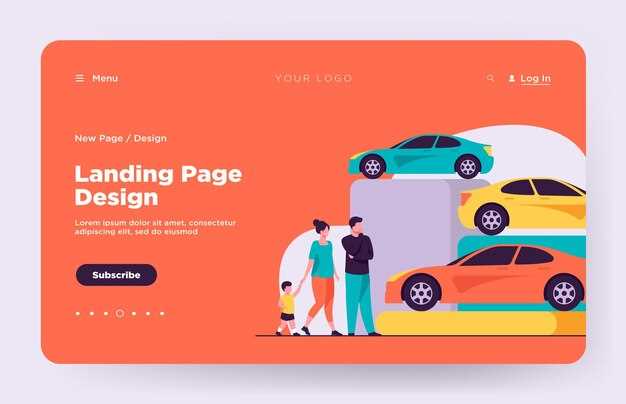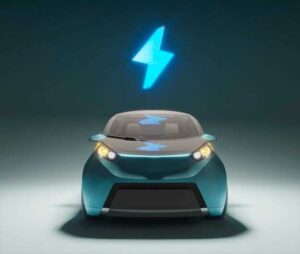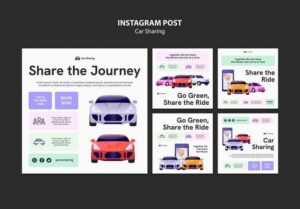The intersection of automobiles and culture is undeniable; cars have shaped fashion and music trends significantly. Recognize the influence of iconic vehicles like the Ford Mustang or Volkswagen Beetle, which have not only become symbols of freedom but also appear prominently in fashion statements and music lyrics. Their sleek designs and engineering marvels spark inspiration among designers and artists alike.
Car culture manifests through fashion choices that reflect speed, luxury, and individuality. For example, the luxury of brands like Rolls Royce encourages high-end fashion, where designers gravitate towards designs that echo elegance and exclusivity. Streetwear has equally adopted automotive motifs, often incorporating vibrant colors and graphics linked to brands and models, making a bold statement on the streets.
In music, cars serve as powerful symbols of rebellion and lifestyle. Genres such as rock and hip-hop often highlight vehicles as essential elements within their narratives. Songs that mention cars reflect aspirations, adventures, and cultural identity, further solidifying the bond between music and automotive culture. Many artists utilize car imagery in their music videos, reinforcing this connection through visual storytelling.
To fully grasp the impact cars have on fashion and music, observe the collaborations between automotive brands and designers or musicians. These partnerships often yield limited-edition merchandise that merges style with automotive passion, creating a unique blend that resonates with fans. As you explore this fascinating relationship, you’ll find that the allure of automobiles continues to inspire, challenge, and shape cultural landscapes.
Historical Influence of Iconic Cars on Fashion Choices
Cars like the Ford Mustang and Chevrolet Corvette have long inspired fashion trends. The Mustang’s debut in 1964 marked the rise of the American muscle car, pairing bold designs with youthful rebellion. This car influenced trends such as denim jackets and leather boots, positioning casual styles as mainstream fashion for a generation.
The 1950s saw the Cadillac Eldorado embody luxury and glamour. Its sleek lines and chrome accents resonated with the high-fashion runways, where designers featured glamorous dresses and tailored suits, reflecting the elegance of this iconic vehicle. The appeal of the Eldorado extended to accessories, including oversized sunglasses and statement jewelry, which became synonymous with luxury and sophistication.
In the 1970s, the Volkswagen Beetle emerged as a symbol of counterculture. Its distinctive shape and affordability made it popular among the youth, leading to the embrace of bohemian styles. Fashion choices included flowing fabrics, tie-dye shirts, and comfortable footwear, aligning with the car’s free-spirited essence. This alignment encouraged designers to adopt carefree aesthetics in their collections.
The 1980s introduced the DeLorean, capturing the imagination with its unique gullwing doors. This futuristic design inspired edgy and avant-garde fashion trends. Metallic fabrics, bold prints, and unconventional silhouettes became prevalent in the fashion scene, as designers sought to echo the car’s innovative spirit.
Today, electric vehicles like Tesla are pushing the envelope in eco-conscious fashion. Sustainable materials and minimalist designs reflect the values of contemporary car enthusiasts. Fashion choices now include organic fabrics, recycled materials, and unisex styles, influenced by the modern car’s emphasis on sustainability.
Iconic cars continue to shape fashion choices, bridging the gap between style and speed. Their influence persists through a shared ethos of design, identity, and cultural expression. Whether it’s a vintage classic or a modern electric vehicle, these cars leave an imprint on how we dress and express ourselves.
Exploring the Relationship Between Car Brands and Musical Genres
Car brands and musical genres often share more than just a cultural space; they can define lifestyles and attitude. For instance, luxury car brands like BMW and Mercedes-Benz commonly resonate with high-end hip-hop and R&B artists. These musicians often flaunt their success through lyrics that highlight luxury vehicles, creating a direct association that influences both fans and car buyers.
In contrast, American muscle cars frequently appear in country and rock music. The roaring engines and rebellious spirit of brands like Ford and Chevrolet align well with the themes of freedom and ruggedness prevalent in these genres. Songs often celebrate road trips and the thrill of driving, enhancing the connection between the music and the iconic imagery of these vehicles.
European car brands, such as Audi and Porsche, reflect sophistication and style, which attracts genres like electronic and pop music. Artists in these fields often use sleek visuals in their music videos to convey a modern aesthetic. The sync between music production styles and finely engineered cars serves to amplify this image of chic innovation.
Rapper and car enthusiast Travis Scott often uses his association with brands like McLaren to symbolize speed and luxury in his music. Such partnerships not only elevate the artist’s image but also create a desirability around the car brands showcased, influencing fans’ purchasing decisions.
Brands often leverage popular music to market their vehicles, integrating soundtracks that feature trending artists into their advertisements. This strategy makes the cars appealing by tapping into the emotional and cultural relevance of the music. By aligning themselves with specific genres, car companies can effectively target demographic segments that resonate with those genres, thus enhancing brand loyalty.
The interplay between car brands and music genres continues to evolve, as both industries adapt to changing consumer preferences. Staying attuned to these connections enriches the cultural narrative that surrounds both sectors, creating a unique fusion of imagery and sound.
How Car Culture Shapes Streetwear Trends
Car culture directly influences streetwear through iconic imagery and collaborations. Designers often incorporate automotive motifs into their collections, merging the thrill of driving with urban fashion.
- Influential Brands: Brands like Supreme and Off-White frequently collaborate with automotive companies, releasing limited-edition items that appeal to car enthusiasts and fashion lovers alike. These collaborations often leverage logos and design aesthetics from the automotive world.
- Color Palettes: Colors inspired by cars, such as metallics, racing stripes, and neon shades, flood streetwear collections. These vibrant hues create an energetic vibe that resonates with youth culture.
- Graphics and Prints: Graphics featuring cars, tracks, or automotive parts offer a unique statement. T-shirts and jackets adorned with these designs become conversation starters, elevating casual wardrobes.
The influence of car culture extends to lifestyle brands catering to automotive enthusiasts. Collaborations between streetwear designers and car manufacturers spark interest and drive demand.
- Themed Collections: Seasonal collections inspired by car models or racing events attract attention. For instance, a capsule collection focused on classic muscle cars can appeal to fans of vintage aesthetics.
- Street Style: Car meets and rallies showcase streetwear, creating a dynamic platform for fashion visibility. Participants wear their favorite brands, further connecting automotive passion with personal style.
Additionally, car culture inspires accessories that enhance streetwear looks. Caps, bags, and sneakers often mimic automotive design elements, merging functionality with style.
- Footwear: Sneakers modeled after racing shoes or inspired by car materials deliver comfort and performance, appealing to both car and fashion enthusiasts.
- Headgear: Hats featuring automotive logos or designs not only protect from the sun but also serve as a stylish addition to any outfit.
Active participation in car culture sharpens fashion senses, allowing individuals to express their personal style. Understanding these connections allows consumers to curate wardrobes that reflect both automotive passion and streetwear trends.
The Role of Cars in Music Videos and Their Visual Impact
Incorporating cars into music videos enhances storytelling and establishes a specific mood. High-end cars symbolize wealth and success, while vintage models evoke nostalgia. Artists like Drake and Beyoncé utilize luxury vehicles to amplify their status, creating a lasting visual impression.
Not only do cars act as props, but they also become characters in the narrative. For instance, in the music video “Fast & Furious” franchise collaborations, the cars embody speed and freedom, reinforcing the song’s energetic vibe. This visual element resonates with audiences, driving engagement and reinforcing brand identities.
The choice of car can define genres. Hip-hop often showcases sleek, expensive vehicles, emblematic of lifestyle aspiration. In contrast, indie bands might prefer classic cars, presenting an authentic, relatable image. This distinction in vehicle selection draws clear lines between musical identities.
Filmmakers frequently use cinematographic techniques to highlight vehicles. Slow-motion shots, unique angles, and vibrant colors amplify the car’s visual impact, creating memorable moments that elevate the overall aesthetic of the video. This not only grabs attention but encourages viewers to revisit the content.
As music videos circulate on social media, users often share snapshots of stylish cars, sparking trends and influencing fashion choices. The portrayal of cars as symbols of luxury and rebellion encourages brands to collaborate with artists, further blurring the lines between music, style, and lifestyle.
Ultimately, cars in music videos serve as powerful tools for expression. They enhance the narrative, connect with viewers, and drive cultural trends, affirming their pivotal role in shaping both music and visual culture.
Case Studies: Celebrity Cars and Their Fashion Statements
Beyoncé’s custom pink Lamborghini Gallardo showcases her bold style. This vibrant vehicle mirrors her vibrant fashion choices, often seen in attention-grabbing outfits at red carpet events. The color pink connects with themes of femininity and strength, reinforcing her identity as a powerful figure in pop culture.
Harry Styles has made waves with his vintage Dodge Charger. This classic car complements his eclectic wardrobe, featuring both retro and avant-garde ensembles. Styles’ choice reflects an affinity for timeless pieces, showing how vintage aesthetics influence modern fashion sensibilities.
Kylie Jenner’s black Rolls-Royce Phantom highlights luxury and opulence. Matching her sleek, high-fashion looks, this car emphasizes her status in the beauty and fashion industry. The partnership of luxury automobiles and designer outfits amplifies her brand’s glamorous image.
Travis Scott drives a custom McLaren, which echoes his streetwear style. His embrace of contemporary urban aesthetics finds a physical representation in this high-performance vehicle, appealing to a younger audience that shares his passion for both music and fashion. The car’s sporty lines complement his favored oversized silhouettes.
Rihanna’s classic Mercedes-Benz SL is synonymous with sophistication. She often pairs this ride with chic outfits, illustrating a seamless blend of luxury and edgy fashion. This iconic model resonates with her essence, highlighting timeless elegance in her approach to style.
These examples illustrate how celebrity car choices extend beyond mere transportation. Each vehicle serves as a canvas for personal expression, harmonizing with their distinctive fashion statements and influencing their fans and followers.
Future Predictions: Electric Cars and Emerging Fashion Trends
Electric cars are not just a trend; they are set to influence fashion significantly. Designers increasingly take into account the sustainability movement as they create collections. As eco-friendly vehicles gain popularity, clothing lines made from recycled materials are expected to surge. This shift presents opportunities for brands to incorporate innovative fabrics that align with eco-conscious lifestyles.
Wearing high-tech fabrics that interact with electric vehicles enhances user experience. Smart clothing can integrate with car technology, offering users personalized features like climate control or navigation displays. Expect brands to collaborate with automotive companies to create connected fashion that reflects this synergy.
Color palettes in fashion are shifting towards shades emblematic of electric cars–vibrant greens, sleek silvers, and bold blues. Iconic brands, such as Tesla and Rivian, are likely to inspire collections that mirror the aesthetics of their vehicles, pushing boundaries in design innovation. This trend will attract consumers who want their wardrobe to reflect their values and lifestyle choices.
As electric vehicles reduce noise pollution, events centered around fashion and music will thrive. Outdoor shows, featuring electric cars as part of the setup, will foster immersive experiences. The intersection of fashion, music, and technology will lead to unique collaborations that emphasize creativity and sustainability.
| Trend | Description |
|---|---|
| Sustainable Materials | Increased use of recycled and eco-friendly fabrics in fashion. |
| Smart Clothing | Integration of clothing with electric car technology for enhanced functionality. |
| Color Influence | Fashion embracing colors inspired by electric vehicle designs. |
| Event Synergy | Outdoor fashion shows incorporating electric cars for immersive experiences. |
The future holds exciting prospects for the fusion of electric cars and fashion. As consumers increasingly align their choices with sustainability, brands will adapt quickly to meet these preferences, driving innovation and aesthetic shifts in the industry.






